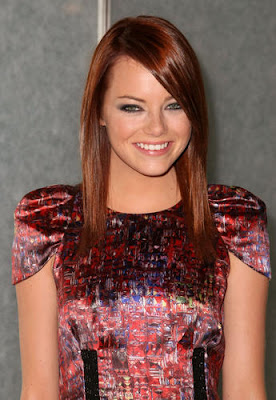Welcome to another week of Scriptshadow. This week, we have two mega-geek scripts we’re reviewing. The first is Peach Trees, the Judge Dredd project, which Roger reviews today. The second is a reimagining/sequel to a popular franchise from the past, a script that’s been around for a decade and is beloved by many. Well, I’ll just say right now that I have no idea why anyone would love this script. I was bored out of my mind. I’ll also be reviewing two low profile recent spec sales, both of which were quite good. And since it’s the last Friday of the month, that means Amateur Friday Review! I just picked out the script this morning so we’ll have to see if it’s any good. Right now, here’s ROGER with his review of the next Judge Dredd project.
Genre: Science-Fiction, Action
Premise: When Judge Dredd arrives with rookie Cassandra Anderson to investigate a trio of murders at high-rise called slum Peach Trees, a drug lord puts Peach Trees on nuclear lockdown and the Judges are trapped inside, hunted by the entire populace. The Judges must choose between escaping the building, or ascending two-hundred stories to prove the drug lord guilty and execute her.
About: Alex Garland (The Beach, 28 Days Later, Sunshine) writes this adaptation to the popular AD 2000 comic strip. Pete Travis (Vantage Point) is set to direct for DNA Films. Karl Urban will star. Judge Dredd was named the seventh greatest comic character by Empire Magazine, and in Britain, he’s certainly the most well-known.
Writer: Alex Garland

“Peach Trees. This is Ma-Ma. Somewhere in this block are two Judges. I want them dead. And until I get what I want, the block is locked down. All Clan, every level, hunt the Judges down. Everyone else, clear the corridors and stay the fuck out of our way until the shooting stops. If I hear about anyone helping the Judges, I’ll kill them and the next generation of their family.”
Peach Trees is the high-rise Judge Dredd becomes trapped in, a mega-slum with a population of a hundred thousand people that are either trying to kill or hide from the iconic character as he ascends two-hundred stories to prove a drug lord guilty and execute her.
It’s a plot stripped of any supercilious details that’s less Hollywood and more 2000 AD, a simple framework that possesses the brilliance of taking a well-known comic book hero and placing him inside a contained thriller.
It’s like taking Batman and putting him in Die Hard.
I remember the 1995 Judge Dredd movie.
While not a reader of the British comic strip, even I could tell that something was amiss. The tone was all over the place. Here was a simple character that was supposed to be a faceless personification of justice, but this personification has Rob Schneider as a sidekick and Sylvester Stallone as a face. Stallone is quoted as saying, “It didn’t live up to what it could have been. It probably should have been much more comic, really humorous, and fun. What I learned out of that experience was that we shouldn’t have tried to make it Hamlet; it’s more Hamlet and Eggs…”
While I don’t agree that it should have been more comic (Sorry, I can only stand one Rob Schneider in a movie), I do think Stallone had a point. The ambition and scale of the plot does not serve the character. A story that is supposed to be about a futuristic gunslinger whom possesses no sympathy for either criminal or victim is lost in a framework that somehow includes cloning, the Hero’s Journey, the power struggles of a dysfunctional family, cannibals and Sly unintentionally but comically screaming, “I am the Law!”
There was plenty of humor, but not enough, I dunno, carnage.
It wasn’t visceral.
I suppose the idea of a Judge trying to clear his name with the law can make for interesting conflict, but I don’t want to watch court scenes.
I want to watch Judge Dredd shoot bad guys with his Lawgiver Gun.
Wait. I don’t know anything about Judge Dredd or Mega City One. Does Alex Garland tell an origin story?
Nope.
And, that’s what makes “Peach Trees” so refreshing.
All you need to know is that it’s the future, and that there’s a guy who will shoot bullets through civilians (endangering them, but not killing them) to execute criminals.
Mega City One is the last outpost of civilization in post-apocalyptic America. It’s a series of mega blocks, monolithic high-rises that serve as their own self-contained towns, stretching from Boston to Washington. Skyscrapers are the low-rise buildings peppered between them.
When we meet Dredd he’s suiting up. We meet his Lawgiver Gun, which seems to be matched to his DNA. The whole time, the top half of his face is hidden by his visor, and we only see chin and mouth, “as if they have been carved from rock.”
He chases a car full of Slo-Mo junkies on his motorbike. Slo-Mo is a drug administered via inhaler, and not only does it slow down time for its users, it causes the world to look beautiful, iridescent and bright. When the junkies steamroll some civilians trying to get away from the Judge, they start to die.
Presumably, Dredd has all the authority of police, judge, jury and executioner.
Especially executioner.
While they die, we learn that the Lawgiver is voice-activated and contains many different kinds of ammo. We also learn something about Dredd. He has phenomenal aim, even when he has to place a shot through a civilian, “Remain calm. The bullet missed all major organs, and a paramedic team will be with you shortly.”
Does Dredd get a sidekick in this tale?
Rookie Cassandra Anderson is an orphan who was given a Judge aptitude test (as is standard for orphans) at age nine. Although her score was unsuitable, she was entered into the Academy upon special instruction. When we meet her, we learn that her final Academy score is three percentile points below a pass.
As she stands before the Chief Judge, Dredd wonders why she’s in uniform. When Anderson is able to point out how many people are in the next room observing her, without seeing them mind you, we realize that she’s a psychic, a power she possibly developed as a child because she lived one hundred meters from a radiation boundary wall. While the fall-out proximity made her a mutant, it also killed her parents.
Although she’s failed the Academy, the Chief Judge is giving her one more chance. She’s to spend a day out in the field with Dredd, and he’s to assess whether she makes the grade or not, “Sink or swim. Chuck her in the deep end.”
“It’s all the deep end.”
Dredd informs of her what to expect out there. If she sentences someone incorrectly, she automatically fails. If she doesn’t obey a direct order from him, she automatically fails. If she loses her primary weapon, or if it’s taken from her, she automatically fails.
That’s all the stuff she knows.
What she doesn’t know is that she’s in for the most fucked-up day of her life.
She gets trapped inside of Peach Trees with Dredd?
Yep.
The Judges only respond to six percent of the seventeen thousand serious crimes reported per day, and a slum like Peach Trees, which has a ninety-six percent employment rate, is rarely visited by a Judge.
Because it’s rarely seen a Judge, someone like Madeline Madrigal has risen to power.
A character possibly inspired by real-life bandit queen, Phoolan Devi, Ma-Ma is a former prostitute who supposedly feminized a pimp with her teeth and took over his syndicate. More violent than all of the other crime lords and clans, she runs Peach Tree from her Dolce & Gabbana crack den-esque penthouse on the top floor of the two-hundred story building. She is responsible for the distribution of Slow-Mo in Mega City One.
As a testament to her ultraviolent nature, she has her lieutenants, Caleb, Kay and Sy, murder a trio of dealers who were caught selling a competitor’s product. They pump the dealers full of Slo-Mo, skin them alive (and because the brain moves at one-percent of normal speed while on the narcotic, this must seem to last an eternity) and toss them off the balcony of the atrium that rises through the center of the building as a message.
Of course, Dredd and Anderson arrive to find the bodies, and thanks to a helpful paramedic, they’re told how things work under Ma-Ma’s rule and he tips them off to the Slo-Mo distribution headquarters on Level 39. The Judges shoot up the joint, and we’re treated to our first gun fight which should blow people’s minds in the cinema thanks to the combo of the Slow-Mo point-of-view and the 3D. They manage to capture Kay, who has a tattoo of Judge Death on his chest (undead Judges?) and they get in an elevator to take him out Peach Trees.
Their goal is to interrogate him, learn everything he knows, which will give them enough evidence to return and arrest Ma-Ma. Only problem is, Ma-Ma can’t have this happen, so she has her Clan Techie, a dude who has robotic eye implants like a chameleon lizard, takes control of the building’s computers and he socially hacks Sector Control to run a systems test.
Peach Trees’ system control goes into a nuclear war testing drill and the building is suddenly encased in lead-lined shutters, blast doors that can withstand nuclear attack. Not only does this trap the Judges and the population inside, but it cuts off Dredd’s communication link with Control.
So, Ma-Ma announces to Peach Trees that she wants the Judges dead?
Pretty much. It’s a sequence that sort of took my breath away. I couldn’t help but be glued to the page as Dredd and Anderson are standing in the middle of the atrium, looking up at two-hundred stories of balconies as the clans and warlords begin to organize to collect the bounty on their heads.
You can’t help but wonder how much ammo those Lawgiver guns of theirs have.
As Dredd and Anderson struggle between avoiding detection and their duty as people that embody justice, they have to ultimately decide if they should just escape, or if they should ascend all two-hundred stories to prove Ma-Ma guilty and execute her.
To get the evidence, they have to get Kay to talk. But to get Kay to talk, they have to survive an entire population that is trying to murder them so they can get a quiet moment with him. While things are simple for Dredd, it’s a moral dilemma for Anderson. As a telepath, she is empathetic to some of the people who are caught in the cross-fire, and she really has to decide if all this is worth being a Judge.
How is the action?
Very satisfying.
This thing has fucking micro-genocides in it.
Ma-Ma is willing to kill entire floors full of people to stop the Judges, and she pulls out every weapon and trick and soldier she has to achieve her goal, which may include a quartet of dirty Judges as her ace in the hole.
It’s enthralling and because this is the type of shoot-em-up I love, and because Dredd never takes off his helmet, even when facing his worst fear, I give this an…
[ ] What the hell did I just read?
[ ] wasn’t for me
[ ] worth the read
[x] impressive
[ ] genius
What I learned: I’m still impressed that someone is making a comicbook movie that isn’t an origin story. This isn’t about the creation of a hero or antihero, this is about the character being put in a worst case scenario and seeing if he can just make it out alive. It’s a new formula. Take a popular character and put them in a situation that is basically the worst series of obstacles ever. Or take a superhero and put him inside a contained thriller. In a climate where it seems like Hollywood will never tire of making comicbook movies, this script proves that these tales can be told without telling their back story as the movie. Secondly, as a shoot-em-up, Garland has created a pretty cool cinematic device with the drug Slow-Mo. Although it makes the world slow down for its users, it doesn’t give them super-speed. However, there are lots of POV shots, especially in the middle of the action, and it gives those action sequences more of an edge than just a straight shoot-out.

Genre: Horror
Premise: (from IMDB) Set in a medieval village that is haunted by a werewolf, a young girl falls for an orphaned woodcutter, much to her family’s displeasure.
About: David Leslie Johnson’s script “Orphan,” made a lot of noise when it was picked up a couple of years ago. Even though it didn’t make a huge dent in the box office, I thought it was pretty good, especially the bizarre twist ending which I wouldn’t have predicted had you given me a hundred tries. Johnson has a very enviable backstory. He was lucky enough to have been mentored by Frank Darabont (working with him on both The Green Mile and Shawshank). The Girl With The Red Riding Hood stars Amanda Seyfried, Gary Oldman, Virginia Madsen, Shiloh Somebody and Julie Christie. Catherine Hardwicke, the director of the first Twilight film, is directing.
Writer: David Leslie Johnson
Details: 120 pages – revised first draft – April 16, 2009 (This is an early draft of the script. The situations, characters, and plot may change significantly by the time of the film’s release. This is not a definitive statement about the project, but rather an analysis of this unique draft as it pertains to the craft of screenwriting).

You say I don’t do horror. A pox upon you! I do horror. I’m doing horror right now knuckleheads. I heeded all your nasty e-mails and death threats and am finally giving you want you want. Okay, none of that is true. I’m only reviewing this because I hated the other script I was going to review (“36”) and couldn’t muster up the energy to review it.
But here’s the truth. I WOULD review more horror IF there was more horror to review. It seems like every horror script that comes down the pipeline is either a shitty remake or a sure-to-tarnish-the-original sequel. All I’m asking for is ORIGINAL HORROR. Something fresh and unique, like Johnson’s previous effort, Orphan. Any spec sales that fall under that category, let me know, cause I’ll be happy to read them.
So, The Girl With The Red Riding Hood is a “gothic” reimagining of that famous fairy tale, “Little Red Riding Hood.” Johnson has been saddled with the difficult task of fleshing out this 5 minute story into 2 hours. The results are, I suppose, solid, but since this isn’t really my thing, I had a hard time getting into it.
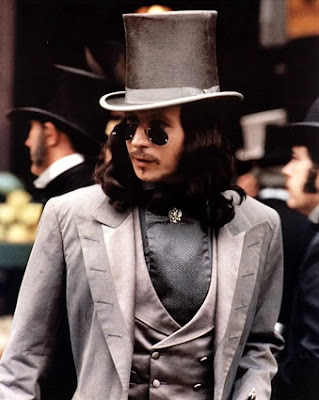
It’s 1324 in a French village and 17 year old Isabelle is having a secret romance with fellow villager, and brooding hunk, Peter, who works for her father. However, Isabelle is told that she’s being married off to a man named Henri to settle a debt between her and Henri’s family. Don’t you just love the old days? Have a problem with me? Here, take my daughter.
Isabelle is devastated but she and the rest of the village have bigger issues to battle. A rogue wolf has been terrorizing the town for decades and while it hasn’t killed any of them recently, signs point to that changing soon. Wolf be hungry. So scared are the villagers that they send for a “Witchfinder General” by the name of Solomon. I’m, of course, wondering the same thing you are. Why would you hire a witchfinder to find a wolf? (see how bad I am at reviewing horror?)
Well Solomon, a very serious individual, is too busy being pissed off to care what I wonder. He explains that this isn’t a wolf terrorizing their town. It’s a WEREWOLF. Solomon knows all about werewolves, you see. He’s killed one before. A werewolf that ended up being his own wife! By the name of Bella! Okay, I’m kidding I’m kidding. She wasn’t named Bella.
Anyway, Solomon and his men lure the werewolf into town, where it becomes preoccupied with Isabelle, and after finally getting her alone, it TALKS. Yes, this werewolf can talk. It wants Isabelle to come off with him. Apparently it’s not a very smart werewolf or it would know that people don’t run off with werewolves! Unless of course, the father orders them to. Then it’s okay.

Afterwards, Solomon realizes that the werewolf is not some rogue wolf at all, but that it lives here, in the village. Someone, one of them, is the wolf! The town naturally starts freaking out, and the mystery is on. Which one of them is the wolf?? And will it kill them all?
Okay so, disclaimer time. This isn’t my thing. Doesn’t matter if this were Oscar-worthy writing, I probably wouldn’t like it. Having said that, it’s a solidly executed script. I admit that the one area of writing that intimidates me the most is swords & shields period pieces. Anybody who can write dialogue for a time they did not exist in, where people spoke in a rhythm and a vocabulary as familiar to us as Japanese, I have a lot of respect for. And I think Johnson did a nice job with that.
I also thought he did a good job keeping the story fresh. There’s little twists and revelations here that throw the story in another direction just when it needs it. We have a devastating family secret that’s revealed about Isabelle’s sister. We have Solomon showing up to add some ass-kicking to the mix. We have a wolf who’s able to speak. All of that really kept you on your toes.
But if there’s one type of story I don’t respond to it’s the “Let’s wait here and die,” story. When you throw a bunch of characters into a location and they just wait for the bad guys to show up – that’s no fun for me. It’s not that you can’t make it work. I just like when my characters are active, when they have plans. In Aliens, they’re not just waiting for the aliens to kill them. They’re formulating a plan to get the hell out of there. Johnson’s able to infuse the characters with some proactive moments, but in the end, they’re still just a bunch of people waiting around.
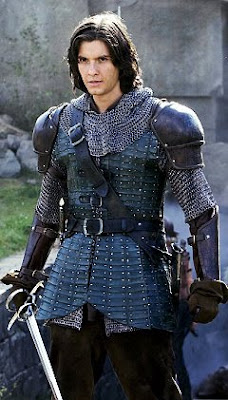
This reminds me. Didn’t the original Red Riding Hood walk through a forest? Wasn’t that the big set piece of the story (did they have set pieces back in the fairy tale days)? That she was going somewhere and the wolf cut her off? I guess I kept waiting for this long journey she would have to take through the woods, knowing that the wolf was out there, and the ensuing suspense that would come from whether she would make it or not. Not a huge deal but it seemed like that kind of scene could have some potential and it was a part of the original story so I was confused as to why it wasn’t there.
Despite this not being my cup of tea, I can see it working. The image of an innocent girl in a red riding hood is so iconic that I can’t imagine the trailer not being cool. The question is, does the public’s demand to have their werewolves with ripped abs and predetermined teams make a tale like this obsolete? We’ll have to wait and see.
[ ] What the hell did I just read?
[x] wasn’t for me
[ ] worth the read
[ ] impressive
[ ] genius
What I learned: Hollywood likes things they know. They like to get behind stories the public’s heard of before because then they don’t have to spend a billion dollars educating them on it. You and I have heard of Red Riding hood, so there’s a familiarity factor there. There’s no familiarity factor with “Blue-shoed Thomas” or “The Old Man With The Green Jacket.” For that reason, fairy tales are a great place to look for stories. Nobody owns the rights to them, and many are well-known. The trick is to throw a unique twist on the tale to make it fresh. Remember how cool that video game “Alice” was? They simply threw Alice in Wonderland into the horror genre. What about taking the Three Little Pigs and turning it into a modern day comedy starring Jack Black, Jonah Hill, and Phillip Seymour Hoffman? I’m only half-joking! But seriously, if you can find a cool spin on one of these tales, run with it. I see a lot of new writers get noticed this way.

Remember guys, time is running out to enter The Champion Screenplay Competition. July 30th is the final day they’re accepting submissions. Head over to the site ASAP and sign up, and if you want to find out more about the contest head, Jim Mercurio, read the interview I did with him here. Nicholl Smicholl. It’s Champion time!
Genre: Comedy
Premise: (from IMDB) A father’s life unravels while he deals with a marital crisis and tries to manage his relationship with his children.
About: Helping keep that big spec sale dream alive, Fogelman’s comedy sold for a 2010 best 2 million dollars! What is this? The nineties?? Fogelman’s name may sound familiar as I just reviewed his Black List script, “My Mother’s Curse,” last week. The film stars Steve Carell (who was attached for the sale), Ryan Gosling, Kevin Bacon, Emma Stone, Marisa Tomei, and Julianne Moore. So live it up people, cause we don’t see these big sellers too often.
Writer: Dan Fogelman
Details: 121 pages – Feb 19, 2010 draft (This is an early draft of the script. The situations, characters, and plot may change significantly by the time of the film’s release. This is not a definitive statement about the project, but rather an analysis of this unique draft as it pertains to the craft of screenwriting).
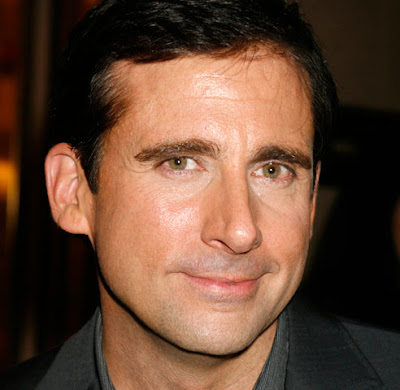
I have a lot of good things to say about this script. Plot, character, and execution come together in this tale like a concoction of Coldstone’s ice cream. And while I know some of you will pan it for its feathery light subject matter, make no mistake, there is some serious skill on display here. In fact, I’d go so far as to say this is the best executed comedy I’ve read since The F Word.
But before we get into it, let’s acknowledge the rhinoceros in the room. If you or I had written this script, there’s no way anyone would’ve read it. The premise is too simple: A man is thrust back into the single life after his wife asks for a divorce. That ain’t going to win Pitch Fest at the Expo, sunshine. But this is one of the realities of the business: Professional writers don’t need a flashy logline to get their stuff read. Their NAME is the flashly logline. And that’s a good thing. Cause when you sell your script, your name will be the flashy logline as well.
42 year old out-of-touch out-of-style out-of-sync Cal thinks he has the perfect life. He fell in love with his high school sweetheart, Tracy, when he was 17, and the two have been married ever since. They have two beautiful children, 13 year old Robbie and 8 year old Mollie, a wonderful house, and an unlimited supply of happiness.
Or at least, that’s Cal’s view of things. It’s been a while since he’s seen things through his wife’s eyes, and that’s going to cost poor Cal in the form of a blindside. Usually, you have a ‘feeling’ when the old relationship is about to implode. But Cal is clueless when his wife breaks it to him that she’s been having an affair with David Jacobowitz and that she wants a divorce.
After getting over that shocker, Cal’s inadvertently thrown into the world of dating. Now for anyone who’s been off the market for a significant period of time and then come back, you’ll recall that dating changes QUICKLY. Five years ago is nothing like today. And five years before that was nothing like five years later. But here’s the thing with Cal. HE’S NEVER DATED. EVER. Tracy was his first and only. This is a world completely alien to him.
Jacob Palmer doesn’t date either. But that’s because he’s perfected a pick-up technique that requires less than a minute of conversation. Palmer can get you from A (the bar) to Z (his place) in less time than it takes most guys to order a drink. The problem with Jacob is that that’s all he does. He sits at a bar booth every night with his perfect hair, his perfect scent, and his perfect outfit and just picks up woman after woman. He doesn’t know the meaning of love.
It just so happens that Cal starts hanging out at Jacob’s bar every night and tells anyone who will listen his sad sack story about asshole David Jacobowitz fucking his wife. Jacob is horrified by this man he deems to be one step above mentally retarded. Just so he doesn’t have to witness this pathetic display anymore, Jacob offers to teach Cal how to pick up women.
Cal’s not even sure he wants to pick up women but anything that takes his mind off David Jacobowitz’s naked body is a good thing, so he agrees. Jacob gets Cal a new haircut, new clothes, and a new attitude, and after a few conversation-related tips (namely: “don’t talk. Ever.”), Cal starts picking up women left and right.
Now at this point you’re probably saying, “What so great about that? It sounds pretty boring.” And I’ll admit, the first half of this screenplay is pretty average. But where Crazy, Stupid, Love excels is in its second half, where all the characters and the intricate relationships that have been built up between them start smashing into each other like pinballs.
See what we realize, is that the first 60 pages were all one big setup, and the last sixty pages are a continuous ESPN ticker feed of payoffs. Tracy is being stalked by the man she had an affair with. Cal realizes all these one-night stands are meaningless and tries to get Tracy back. Cal and Tracy’s babysitter, Jessica, is in love with Cal. Cal’s son Robbie, is in love with Jessica. Just when it looks like Cal and Tracy are going to get back together, she learns that one of his conquests was Mrs. Thompson, Robbie’s teacher! Cal and Jacob end up becoming best friends. But then Jacob ends up falling in love with a girl, who ends up being the worst possible girl he could fall in love with. Even little Mollie is in love, with Zac Efron and High School Musical. And the further all these relationships go, the more “crazy,” the more “stupid” they get.
Blake Snyder said in his book “Save The Cat!” that there needs to be one scene in every screenplay that a producer can point to and say “That’s a movie.” In “Stop Or My Mom Will Shoot,” Snyder’s one produced credit, he said that that scene was a chase scene where, instead of two cars screaming through the streets of downtown, Stallone’s mom is driving 10 miles an hour, pulling up short at stop signs, and holding Stallone back with her arm whenever they came to a stop. That, the producer said, is what convinced me this was a movie.
Here, not only do we get that scene, but we get the reason why this script sold for 2 million dollars. It’s the climax of the story, a huge sequence where all of these relationships finally collide with one another in this glorious wacky explosion. It’s executed so perfectly and with such skill that for a brief moment, you sit up and think, “This is what screenwriting is all about.” And it really is. It’s that moment where all of the variables in your story come together in that perfect harmonic climax. It’s really good stuff.
This script also supports my belief that every character should have something going on. They shouldn’t just be an ear for the main character to disclose information to (like so many amateur scripts I read). Cal’s trying to get his wife back. Jacob’s trying to get laid. Bobbie’s trying to get Jessica. Jessica’s trying to get Cal. David’s trying to get Tracy. Even Molly, the daughter, is obsessed with High School Musical. Nobody’s left out to dry here, so we’re never bored, even though we’re jumping around to a lot of different stories.
And finally, this script does what so many comedy scripts fail to do – it packs the story with heart! And I think heart leads to big bucks. I really do. When you make a reader FEEL something at the end of a screenplay, it stays with them. It makes them want to recommend it to others. All comedies should have some heart dammit! This is proof-positive why.
Really really dug this script. Only didn’t make the Top 25 because the first half was a little predictable. Oh and hey, is this not the single most perfect role for Steve Carell that could’ve been written??
[ ] What the hell did I just read?
[ ] wasn’t for me
[ ] worth the read
[x] impressive
[ ] genius
What I learned: I don’t think you should write a low-concept comedy if you don’t have some connections in the industry. Had an amateur writer tried to get reads from this, they probably would’ve been ignored, as the premise is too generic. As an unknown, you need more flash in your pitch to get noticed, so I’d stick to higher-concept fare if you can.
Genre: Thriller/Drama
Premise: (from IMDB) Based on a true story, a mountain climber becomes trapped under a boulder while canyoneering alone and resorts to desperate measures in order to survive.
About: The buzz hit early on this script, highlighted by the fact that there will be an entire hour without a shred of dialogue. One of the best directors in the business, Danny Boyle, just finished the film. The script is written by his Slumdog Millionaire collaborator, Simon Beaufoy. James Franco plays the lead role. You can learn more about the real-life story here: http://en.wikipedia.org/wiki/Aron_Ralston.
Writer: Simon Beaufoy.
Details: 83 pages – April 1, 2010 draft (This is an early draft of the script. The situations, characters, and plot may change significantly by the time of the film’s release. This is not a definitive statement about the project, but rather an analysis of this unique draft as it pertains to the craft of screenwriting).
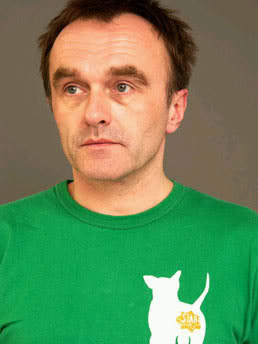
A question I hear a lot is, “Have you ever read a bad script that became a good movie?” The answer is no, I have not. But the ones that come closest are usually from directors like PT Anderson, Malick, Nolan, Mann, and Sofia Coppola. These helmers have such a powerful and unique style that the story almost becomes secondary to the filmmaking. For example, one thing I loved about Inception was the score. That deep trombone like bass that cycles throughout the film unnerved me in a way a story turn or a character revelation could never do. These kind of filmmaking-specific nuances will never substitute for a good story, but sometimes they can come pretty close.
127 Hours may very well be one of those films, because as a script, I didn’t think it was very good. It isn’t bad. It’s just…predictable.
For those cinephiles who saw “Into The Wild,” a few years ago, Sean Penn’s directorial effort about a man who sells everything he owns and heads for Alaska, Aron Ralston is very much like the character in that film, Christopher McCandless. He’s an adventurer, an outdoor enthusiast, a lover of nature. And like McCandless, he does everything exclusively by himself.
This is exactly how we meet Aaron, heading down to Blue John Canyon on his bike – alone. Once he reaches the desert, he locks up and sprints towards the canyon.
There he runs into a couple of girls, Kristi and Megan, who feel a bit like filler. The problem with writing a script with only one character is that you only have one character to develop. In other words, you don’t need a lot of space. But in order to get the page count up to feature length, you have to put something there, and I’m guessing that’s why these two are in the script (from what I understand, Aron *did* meet them in real life).
So the girls appear, have a few conversations with Aron telling us what we already know, that Aron rides life solo, then scram. But not before telling him about a party they’re going to 20-some miles down the road. You can’t miss it, they say. There’ll be a gigantic Scooby-Doo balloon swaying in the wind.
Later, he makes his way to a canyon/cliff area, starts running around and exploring, accidentally dislodges a boulder, gets chased Indiana Jones style, squeezes out of the way at the last second, but is unable to get his arm out of the way in time. The boulder catches it against the rock. Aron is shocked when he realizes…he’s stuck.
Thus begins Aron Ralston’s 127 hours of hell.

127 Hours uses three devices to keep us entertained – Video diaries which Aaron leaves on his video camera, flashbacks to his old girlfriend, and a series of hallucinations. Interspersed throughout these moments are Aron trying to figure out what to do. I don’t think I’m spoiling anything here since this is a real-life story, but eventually Aron realizes that the only way he’s going to survive is if he cuts his arm off – a process made difficult by the fact that he only has a Swiss army knife. And not even the real thing either. A cheap Chinese knockoff.
Essentially 127 Hours is a character piece about a man who realizes what being alone is really about. There’s a difference between the kind of alone where you get to pick and choose when you hear others’ voices, and the kind of alone where you don’t hear any voice but your own. As days dissolve into one another, Aron comes face to face with this reality, and begins to appreciate and understand how desperately all the people in his life have tried to connect with him.
This raises a bigger question: If Aron somehow gets out of here, will he finally look to bring these people into his life?
But if I’m being honest, it was hard to root for Aron. This might seem like an odd declaration, but I don’t have sympathy for people who do stupid shit. You read in the paper, “A freeclimber falls 3000 feet to his death.” You know the first thing that comes to mind when I hear that? “You probably shouldn’t have been climbing 3000 feet in the air WITHOUT ANYTHING TO SUPPORT YOU!” I mean if I ever start juggling chainsaws in Vegas and accidentally cut myself in half, I fully expect anybody reading an account of my ordeal to reply: “Serves you right moron.” I mean Aron isn’t cliff-diving into lava here, but running around the desert and climbing mountains with no one else around and without telling anybody where you are is a pretty stupid thing to do. So I just wasn’t onboard with him from the get-go.
I was also never surprised by this screenplay. As soon as Aron got stuck I thought, “There’s three things he can do here: talk to the video camera, go into flashbacks, and hallucinate.” Sure enough, that’s exactly what happens. And while I somewhat enjoyed Aron exploring his connection issues via flashbacks and hallucinations, in the end these scenes were too repetitive to fully keep me interested. At a certain point I was like, “Let’s cut off the arm already.”
Another unfortunate aspect of this story is that we know the ending before the film starts, draining the script of a good portion of its suspense.
Despite all this, I still think 127 Hours can be a good movie. Boyle is a filmmaker that plays in the same sandbox as Nolan, Mann, and Malick, so he obviously saw something worth getting dirty for. If I had to bet, I’d say he was drawn to the hallucinations, which become a huge part of the second half of the film. Visually, these are extremely weird and powerful (I imagine the huge floating Scooby-Doo balloon in the middle of the desert will be the “what the fuck” trailer image that sells a good share of tickets) and if there was ever an opportunity to explore the limits of your imagination, no-holds-barred hallucinations would be a great start.
But if it will be enough to make up for a rather ordinary story, I don’t know.
[ ] What the hell did I just read?
[x] wasn’t for me
[ ] worth the read
[ ] impressive
[ ] genius
What I learned: One of the reasons we go to the movies is to see characters try and overcome the same issues we’re trying to overcome in our own lives. The exploration and eventual conquering of these “flaws,” when done right, can be the most powerful part of your story, because it gives us hope that we can conquer our own issues. There are a few character flaws that consistently work well, and one of them is the one Beaufoy uses here – Aron’s refusal to connect with the world. I don’t know what it is, but when we see someone who refuses to connect with others, we instinctively want them want them to connect with others. I’m reading The Girl With The Dragon Tattoo (the book, not the script) and Lisbeth Salander has this exact same flaw. She’s so disconnected from everyone and everything that we pine for her eventual transformation. We want her to initiate a hug, trust someone, open up to a friend. And the further she pulls away, the more desperately we want to pull her in.




